
Anarchies
Wogg
Project Category:
Bookshelf Speakers
Project Level
Advanced
Project Time:
20+ Hours
Project Cost:
$100-$500
Project Description:
Compact 3 way design with integrated stands.
Design Goals:
The design goal was to reach the low 30Hz range with low frequency extension utilizing a 7″ class driver. This would require a 3 way design to reduce distortion when asking a small driver to reach that low. The goal for the cabinets was to deviate from a standard rectangular shape, using an asymmetrical baffle design that catches attention. This had to be done in an 8 ohm nominal impedance speaker to allow the use of regular AVR amplifiers to drive the speaker.
Driver Selection:
At the time the design was conceived, there were very few small woofers that could reach into the low 30Hz range in under 1 cubic foot of space. The Anarchy 708 by DIYSG fit the bill by easily reaching into the 30’s with anywhere from 1/2 to 1 cubit feet of space ported. For midrange, the Dayton RS100-8 was chosen based on excellent distortion and wide range capabilities. For the tweeter, the Dayton ND20FB-4 was chosen for a small footprint and excellent flat frequency response in the intended range above 4kHz.
Enclosure Design
The enclosure was designed with an angled internal side to thin the baffle for the mid and tweeter chamber. The build uses 3/4″ MDF for the sides and rear, all miter cut for the odd angles and with poplar 1×2 installed for the mounting of the removable rear panel and baffle. The baffle itself is a solid red oak 5/4 board mounted from the inside using threaded inserts floating on 1.25″ wide weather stripping for seal. Internally, a couple 1×2 boards join the sides together for bracing of the woofer chamber. The port uses a 2″ precision port assembly and fires out the bottom of the cabinet through the custom integrated stands. The stands are a critical part of the design to allow the flow of the port and integrate wiring to the floor through steel pipes used for the rear support and a solid 2″ hardwood dowel for the front support.
Crossover Design:
One cabinet was assembled prior to finishing to capture all the measurement data possible to do the crossover design. I used Vituix CAD for the design to take advantage of the wide variety of tools available in the software. The goal for the design was to focus on in room power response with a slow downward slope and as consistent an off axis response as possible for actual listening distance rather than focusing on a flat response and phase coherency at a single 1M measurement point. The phase alignment between drivers and the resulting reverse null is often a focus of crossover design, but really only applies at that very specific measurement and design point. Moving the measurement point causes those phase alignments to no longer be valid, so I paid no attention to the reverse null and instead optimized for power response smoothness. My measurements use a Dayton EMM-6 mic and a Focusrite Scarlett interface in dual channel mode in ARTA. The measurement guide for Vituix and ARTA was used to capture polar measurements in 15 degree increments from + to – 90 degrees. That’s not quite a full polar picture, but my basement space is a bit small to avoid reflections all the way around so I captured as much data as I could. Both the woofer and midrange were merged with close mic measurements in order to cover below the 350Hz limit of my gated measurement space. With all data available, Vituix was used to build 2nd order electrical filters for all drivers and iterated to optimize for power response. The final design is a straight second order low pass on the woofer, a straight second order high pass on the mid, a second order low pass with a tank capacitor on the mid and a pad resistor both before and after the crossover networks. Finally, the tweeter was designed with a second order high pass with an L pad to bring the level down. The shunt resistor in the tweeter L pad was paralleled with a capacitor to implement the downward slope in response desired. This is equivalent to a series inductor when there’s already a series resistor element but less expensive to implement.
Tips & Tricks:
VituixCAD is a fantastic tool but very advanced. Be prepared for lots of Google searches and online forum assistance.
There are countless tips and tricks for finishing this box, too many to count or list!
Conclusion:
The build of the system directly from the simulation output turned out to be excellent! These have been auditioned at the inDIYana gathering in April 2023 and were very well received among the fellow speaker designers. This validates my initial listening impression, the bass is very deep and powerful for small speakers, easily reaching into the 30Hz range and eliminating the need for a subwoofer. Since these are small, the maximum SPL is a bit limited but still reaches 90+dB at the listening point making me uncomfortable with my hearing and the power limits of my Yamaha Aventage series AVR. A quick at listening position sweep with REW confirmed the low frequency extension and shows distortion at well below 1% throughout the spectrum. A quick gated measurement at 1M also showed the response within +-2dB above 400Hz. Overall these are fantastic speakers and will make me happy in my basement man cave for the foreseeable future!
About the Designer:
Paul Graves (aka Wogg) is an experienced Electronics Engineer and has been building woofers since the 90’s.
Project Parts List:
| Part # | Description | Qty. |
| 275-035 | Dayton Audio ND20FB-4 Rear-Mount 3/4″ Soft Dome Neodymium Tweeter | 2 |
| 295-352 | Dayton Audio RS100-8 4″ Reference Full-Range Driver | 2 |
| N/A | Anarchy 708 from DIYSG | 2 |
| 004-5.1 | Dayton Audio DNR-5.1 5.1 Ohm 10W Precision Audio Grade Resistor | 2 |
| 027-214 | Dayton Audio PMPC-2.0 2.0uF 250V Precision Audio Capacitor | 2 |
| 027-220 | Dayton Audio PMPC-3.0 3.0uF 250V Precision Audio Capacitor | 2 |
| 027-238 | Dayton Audio PMPC-6.8 6.8uF 250V Precision Audio Capacitor | 2 |
| 027-258 | Dayton Audio PMPC-30 30uF 250V Precision Audio Capacitor | 2 |
| 255-208 | Jantzen Audio 0.18mH 18 AWG Air Core Inductor Crossover Coil | 2 |
| 257-560 | Dayton Audio 3.5mH 18 AWG Laminated Iron Core Inductor Crossover Coil | 2 |


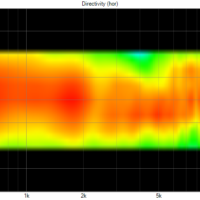
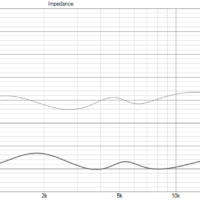



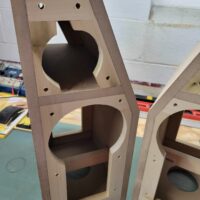
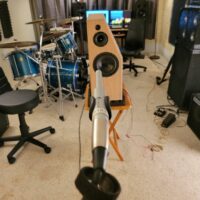

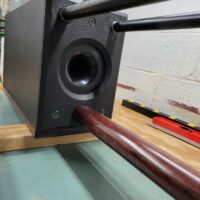
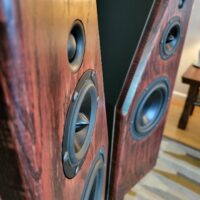
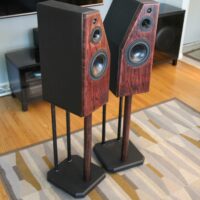
+ There are no comments
Add yours